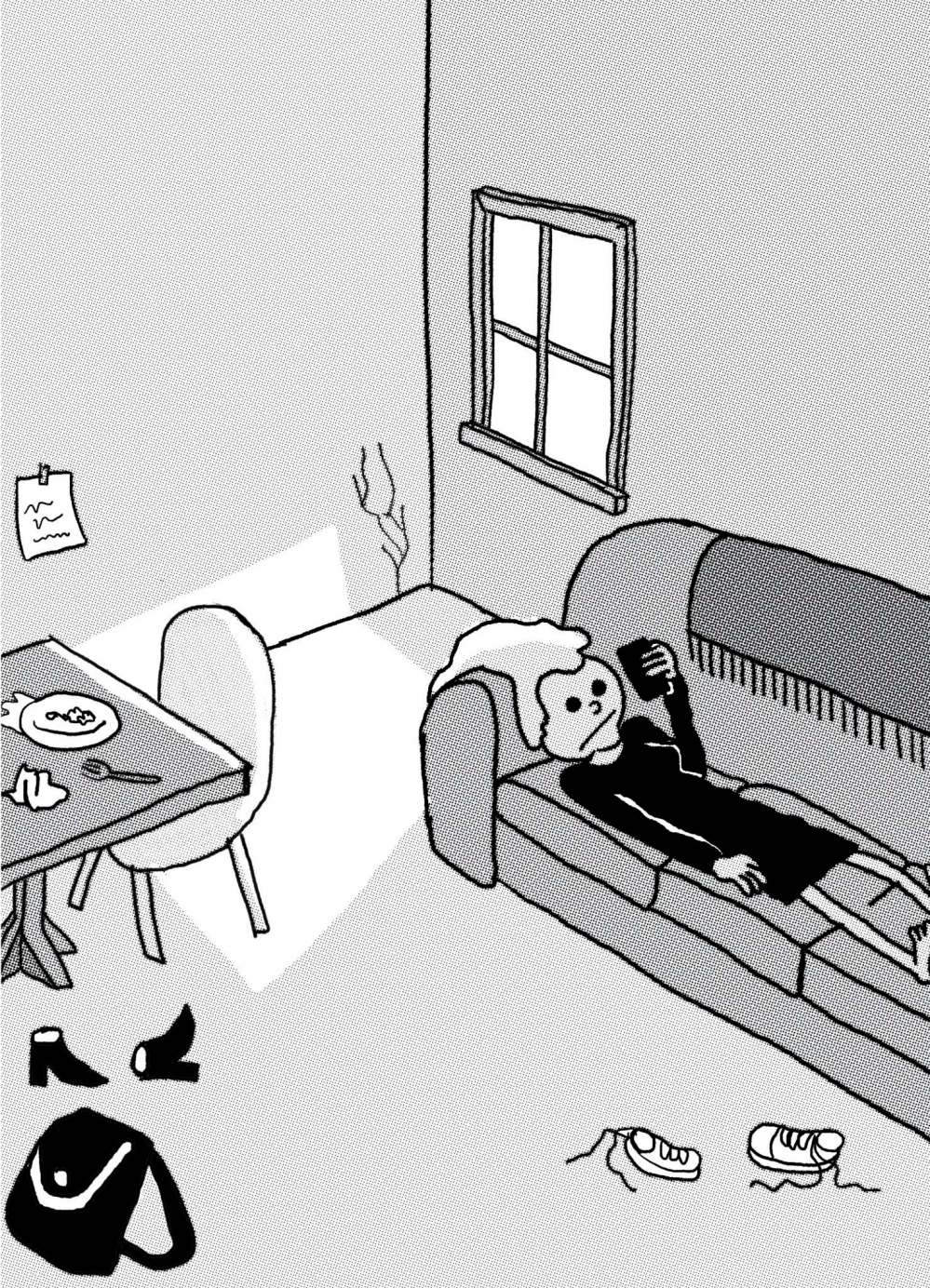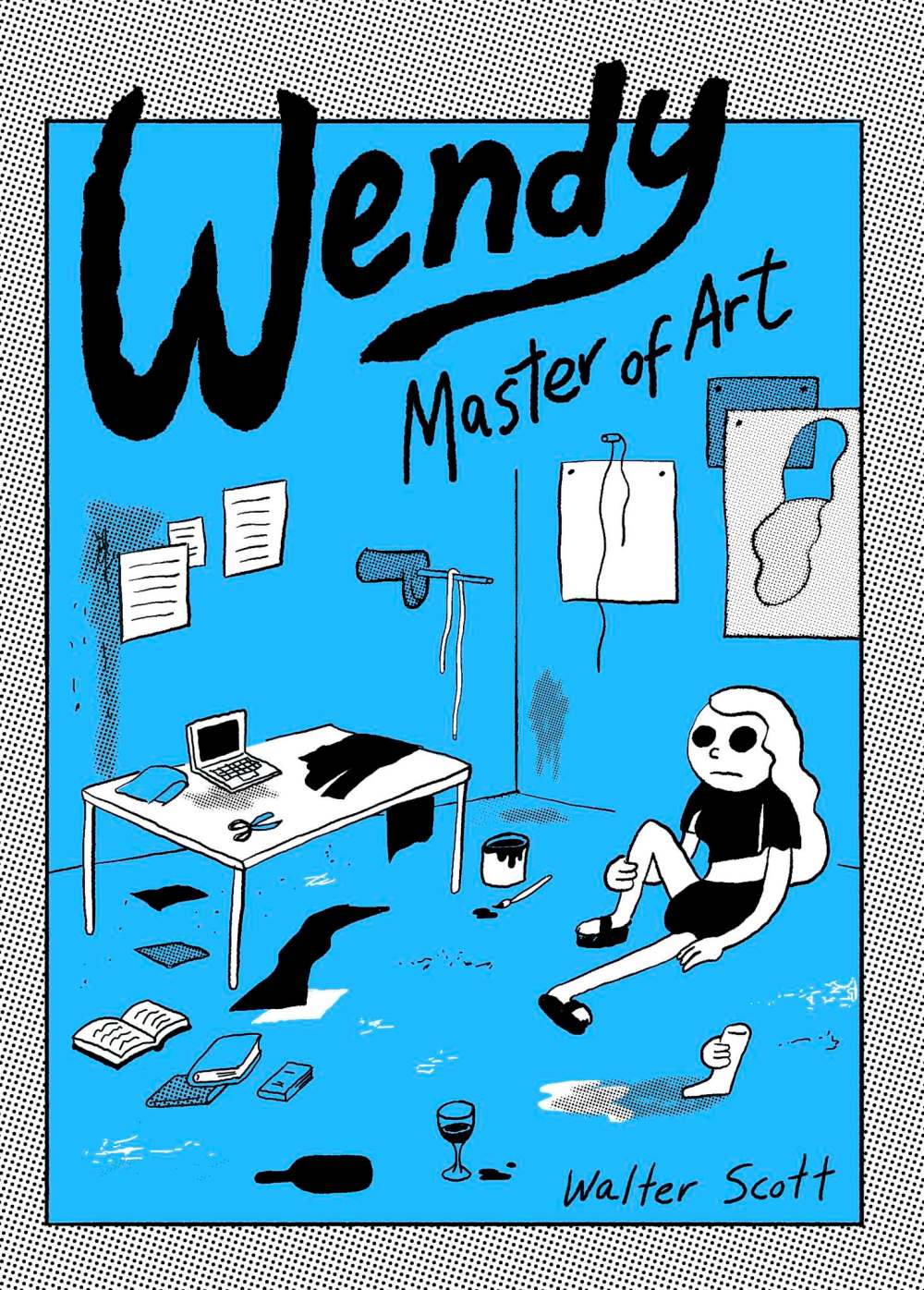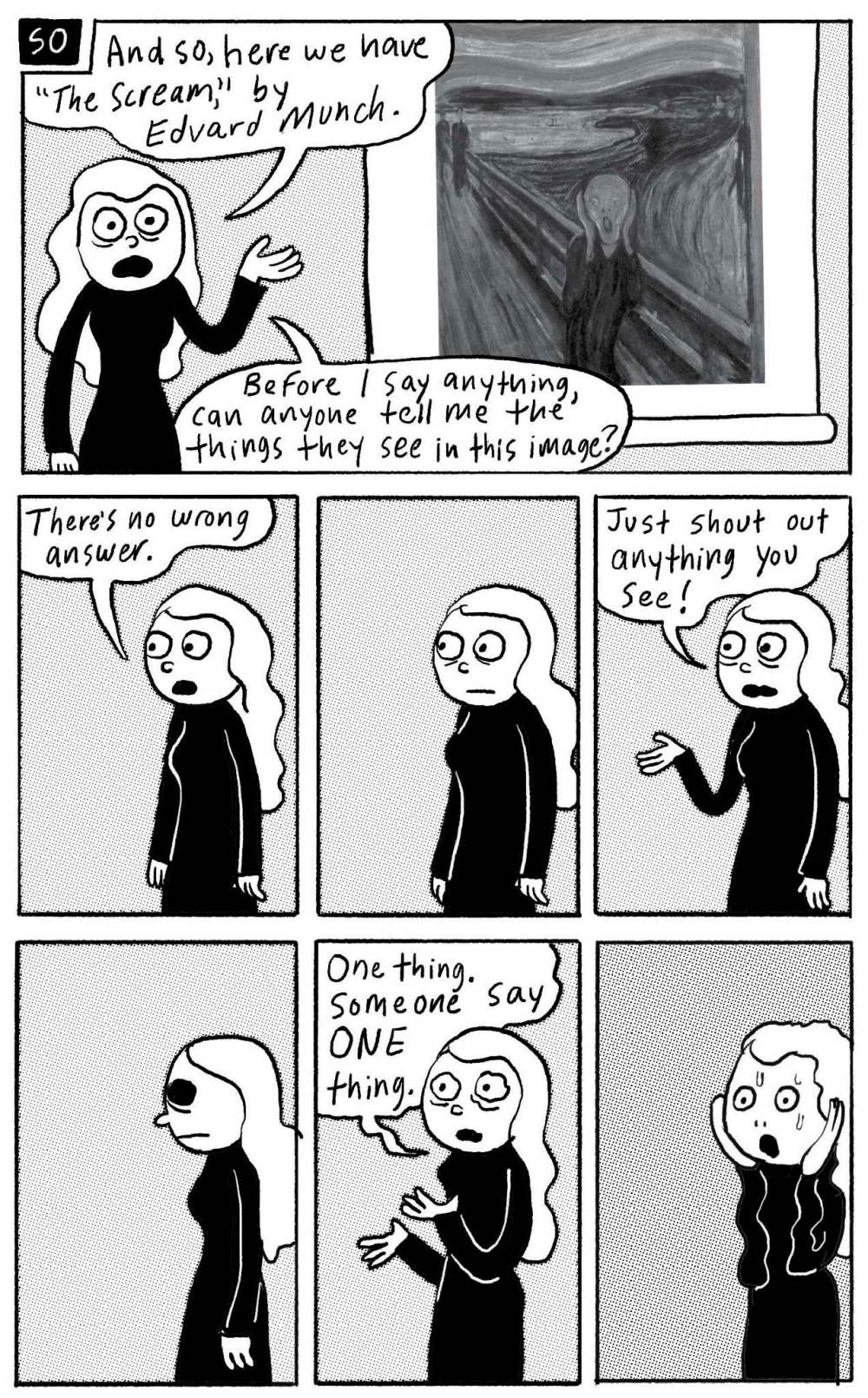Grad school hell
Graphic novel follows heroine through hazards of an art degree
Advertisement
Read this article for free:
or
Already have an account? Log in here »
To continue reading, please subscribe:
Monthly Digital Subscription
$1 per week for 24 weeks*
- Enjoy unlimited reading on winnipegfreepress.com
- Read the E-Edition, our digital replica newspaper
- Access News Break, our award-winning app
- Play interactive puzzles
*Billed as $4.00 plus GST every four weeks. After 24 weeks, price increases to the regular rate of $19.00 plus GST every four weeks. Offer available to new and qualified returning subscribers only. Cancel any time.
Monthly Digital Subscription
$4.75/week*
- Enjoy unlimited reading on winnipegfreepress.com
- Read the E-Edition, our digital replica newspaper
- Access News Break, our award-winning app
- Play interactive puzzles
*Billed as $19 plus GST every four weeks. Cancel any time.
To continue reading, please subscribe:
Add Free Press access to your Brandon Sun subscription for only an additional
$1 for the first 4 weeks*
*Your next subscription payment will increase by $1.00 and you will be charged $16.99 plus GST for four weeks. After four weeks, your payment will increase to $23.99 plus GST every four weeks.
Read unlimited articles for free today:
or
Already have an account? Log in here »
Hey there, time traveller!
This article was published 04/07/2020 (1930 days ago), so information in it may no longer be current.
‘Welcome to HELL (Ontario)” reads a road sign, as the titular heroine in Walter Scott’s Wendy, Master of Art pulls into town, not entirely ready to hit the books and refine her art practice.
In this third installment of Scott’s hilarious series about the chaotic twenty-something artist, Wendy navigates graduate school after being accepted into a Master of Fine Arts (MFA) program at the University of Hell. And although she and her UHell cohort are subjected to academic jargon that indeed turns their eyes to hellish black voids, there are still plenty of lessons to be learned about identity politics and self-discovery outside the classroom.
As in Scott’s previous volumes, Wendy usually ends up taking the fall in many an awkward situation of her own making.
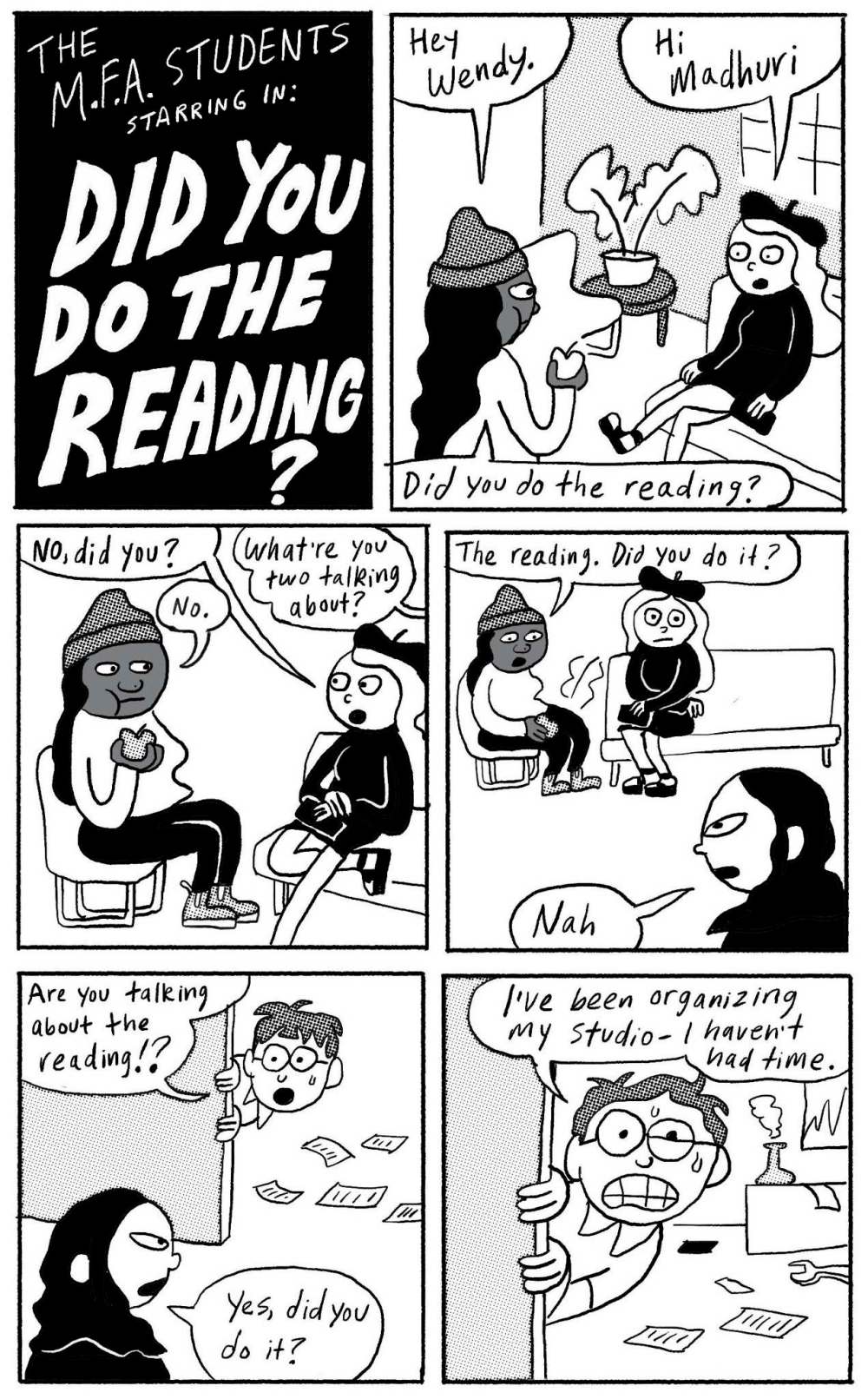
But she’s not just played for laughs, and the care Scott takes with her interiority is both obvious and admirable. Much like Daniel Clowes’ iconic Ghost World heroine Enid Coleslaw, Wendy is a relatable but acerbic young woman who happens to be written by a man.
Personality-wise, though, she’s decidedly more extroverted, perhaps Enid by way of influential comics creator Julie Doucet who, like Scott, is a Canadian cartoonist by way of the do-it-yourself zine movement. Doucet’s semi-autobiographical comics depict “Julie,” a similarly squiggly-limbed art-school party girl trying to balance the need to create with the desire for human connection. Both women also find themselves, while in art school, entangled in romantic relationships that do not serve them — in Wendy’s case, a polyamorous relationship that makes her uneasy.
As Wendy and her classmates navigate their class projects and personal lives, Scott depicts them in stark black and white, looking frequently disheveled (bordering on slightly deranged), often with hollow eyes signaling stress, shame, a hangover, or often all three.
Though many of the cohort’s anxieties stem from a shared need for acceptance, individual identity politics are always a hot topic in art school. Scott, a queer Indigenous artist himself, cleverly reflects these diverse lived experiences and different types of privilege within Wendy’s peer group. Madhuri is a queer woman of color, painfully aware of how Wendy’s own identity affords her the luxury of being a perpetual hot mess. Simon is straight, white and male, well-versed in anti-oppressive discourse and perpetually sweaty and jittery while on high alert to point out the next problematic thing. Of course, he remains blissfully aware of how much space he monopolizes by speaking out against issues that largely do not concern him. And already-famous Maya (from Scott’s previous Wendy books) garners awe and jealousy from her cohort as she frequently ditches class for yet another international art show, later admitting that she’s really only at UHell “for the content.”
Wendy, Master of Art has a bit of a reality-TV feel, which is part of why the book also works so well as a stand-alone volume. With the same group of young people basically forced into close quarters with each other, alliances are formed, frenemies abound and hookups happen on the sly. If this MFA cohort isn’t in hell, they are most definitely at least in purgatory, with graduation as the only way out.
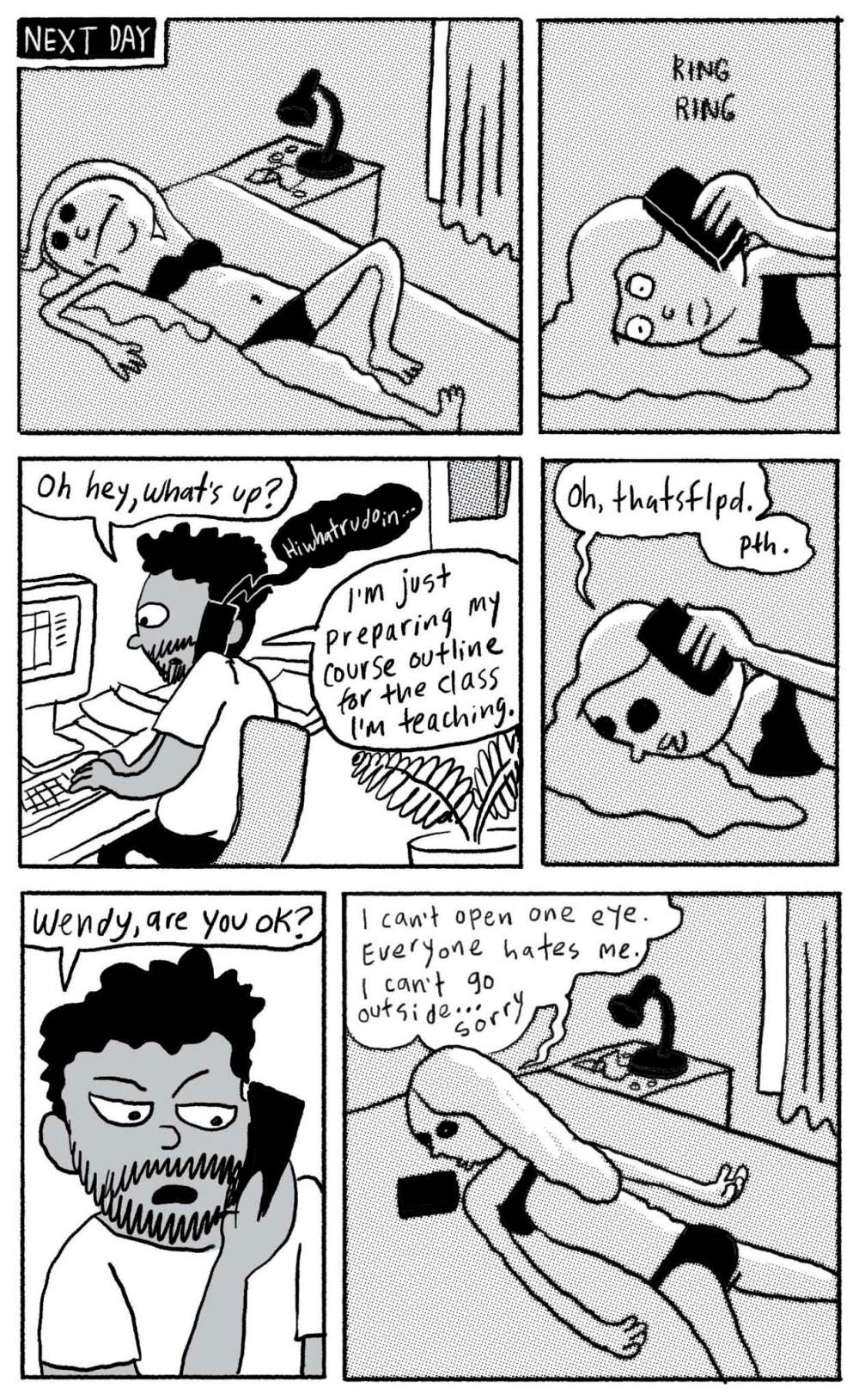
Amidst the drama, though, are some real opportunities for personal growth, as Wendy exhibits more agency than she has in previous volumes. She is able to sort out her personal life and art practice, while also acting like a responsible adult — her failure to do the latter has been, up until now, the very essence of her character. When put in charge of a group of undergrads, she at first experiences crippling impostor syndrome, but comes to realize she enjoys teaching, and in doing so potentially widens future career options for herself.
Loosely based on Scott’s own experiences in the University of Guelph’s MFA program, Wendy, Master of Art is a love-and-vinegar letter to graduate school and art-world culture, while also serving as a guide for how to survive both of these. Scott captures the struggles and excitement of creative study with plenty of self-aware snark, while also affording his heroine the self-compassion she needs to finally grow up.
Winnipeg’s Nyala Ali writes about race and gender in contemporary narratives.


